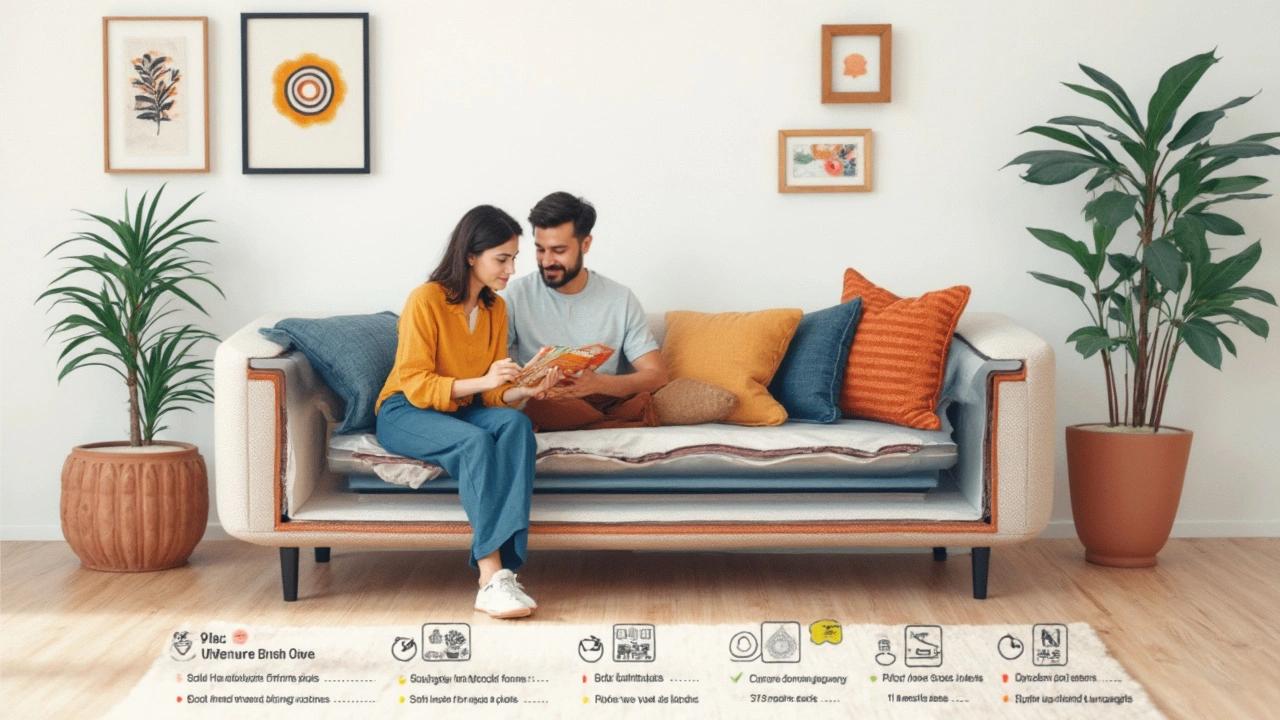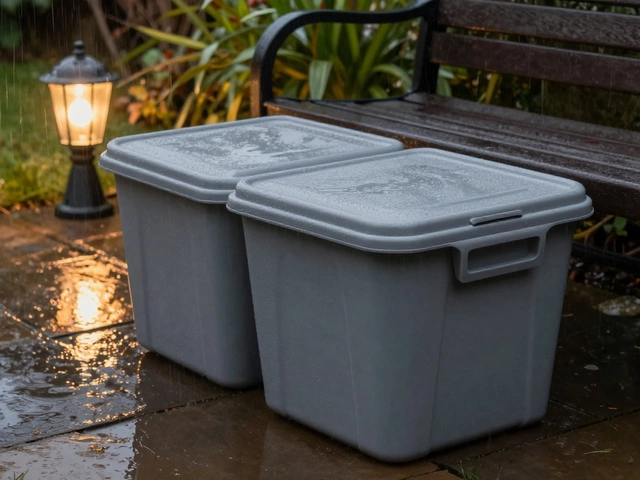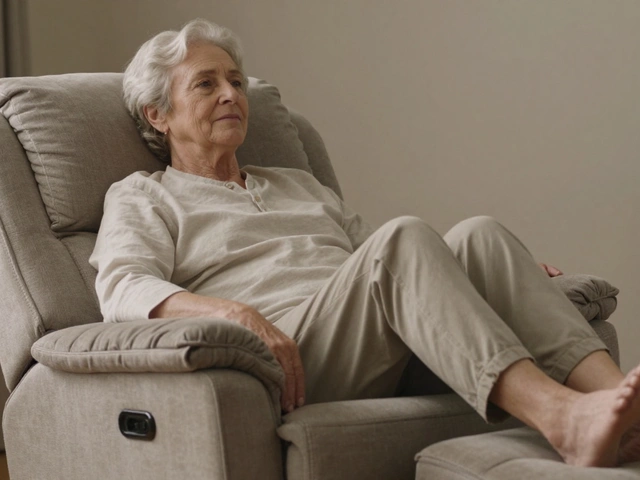Walk into most furniture stores and you’ll see dozens of tempting sofas, all looking cozy, fresh, and… almost too similar to tell apart. It’s easy to get swayed by the color or the price tag, but here’s the kicker: not all sofas are built the same—far from it. Think about this: a cheap, trendy couch might look great for a year. But then life happens—someone spills coffee, your dog digs into the corner, or you just sink in too often. Suddenly, those springs are squeaking and the fabric’s gone fuzzy. Picking a sofa that will actually last means knowing what lies beneath the surface, literally. Let’s get down to the guts of it, so you avoid one of the biggest home-buying mistakes people make.
Understanding Sofa Construction: What Actually Matters?
Ever wonder why your grandma’s sofa survived decades of family chaos while your sleek, new couch looks ragged after two years? It isn’t luck; it’s what’s inside that counts. If you strip a sofa down, you’ll typically find a wooden frame, springs to support the seat, padding, and then fabric on top. Start with the frame—it honestly decides your sofa’s fate. Go for kiln-dried hardwood if you want reliability; pine is popular but soft, and particleboard will sag shockingly fast. Oak, maple, and beech are gold standards for a reason—they resist warping and cracking. You can spot a solid build by peeking underneath: chunky, smooth-edged wood, joints screwed and glued—never just stapled.
The next thing to eye is the suspension. Eight-way hand-tied springs are the holy grail for many experts, and with good reason—they spread your weight and bounce back for years. But they’re expensive, so you might find sinuous (zig-zag) springs in mid-range sofas. These can hold up well if the gauge (thickness) of metal is high. If you see only webbing (a sort of woven band), don’t count on that couch seeing its fifth birthday.
Padding forms the comfort layer. High-density foam (above 1.8 pounds per cubic foot) won’t collapse within months, while cheap fillers like polyester fibers get lumpy. Some top sofas use a blend: foam core for shape, with down or feather for softness, but they need more fluffing and care.
Let’s talk fabric. A wild truth: some textiles can handle 100,000 rubs while others look worn after 5,000. (That’s the “Martindale” rub test for durability, by the way.) Synthetic blends like polyester and nylon resist stains, while tightly woven natural fabrics last longer than looser ones. Leather? Top-grain works wonders; bonded leather is a heartbreak waiting to happen. Consider performance fabrics—many brands treat them for stronger stain and spill resistance. Just ask: how was it tested, and how does it clean?
Here’s a chart to sort out some common frame and fabric types by their proven durability:
| Sofa Frame Material | Average Lifespan (Years) | Notable Pros | Common Cons |
|---|---|---|---|
| Kiln-Dried Hardwood | 15+ | Extremely sturdy, warps less | Costlier upfront |
| Pine | 7-10 | Cheaper | Dents easily, warps |
| Particleboard/MDF | 3-5 | Very affordable | Sags, cracks easily |
| Upholstery Fabric | Martindale Score | Best For | Avoid If |
| Top-Grain Leather | 30,000+ | Long-term luxury | Vegan/ethical reasons |
| Polyester/Microfiber | 30,000+ | Pet/kid homes | Can pill over time |
| Linen | 12,000-20,000 | Light use rooms | Heavy daily use |
Best Materials for Longevity: Picks and Potholes
A sofa can look sharp and sophisticated, but the right material means you can use it, live on it, actually enjoy it, and not sweat every spill. What should you actually pick if you want that sweet mix of endurance and style?
For frames, there isn’t much debate: choose a sofa with kiln-dried hardwood for the core structure. Ask salespeople directly, because the tag often glosses over those details. If the store doesn’t know the wood type, that’s a red flag.
When browsing for the best upholstery, skip the temptation to buy something based only on color (just trust me here). Performance fabrics—think brands like Crypton, Sunbrella, or Revolution—have turned the game upside down with their stain-blocking tech. Apartment dwellers, pet owners, and parents rave about how these fabrics survive both claws and crayons. Want proof? Several big hotel chains have switched over entirely to performance fabrics, since they can handle thousands of guests trampling over their lobbies’ furniture daily.
With leather, only full or top-grain matches the durability hype. Cheap "genuine" or "bonded" options won’t go the distance and can start cracking or peeling so fast it’ll hurt your wallet. If you’re set on a fabric sofa, look for a tight weave—loose ones snag, stretch, and age badly. Double rub count isn’t just a random number; anything above 25,000 means daily life won’t wear it down. And don’t ignore the foam—ask for the density. Anything less than 1.8 pounds per cubic foot? Don’t expect many years of support.
Legs and visible wood accents matter, too. Metal, solid wood, or well-braced legs will keep their shape (and keep the frame from wobbling). Cheap plastic breaks, and hollow frames can leave whole corners sagging.
Finally, take a hard look at how the cushions are stitched and wrapped. Zippered covers that can be laundered or replaced are gold, especially for families. Piping and double-stitching at the seams mean less risk of splits and tears as the years go by.

Spotting the Red Flags: Hidden Shortcuts and Weaknesses
Most people fall for the obvious: a sofa looks good, smells new, and the cushions feel dreamy in the store. But here’s the trap: tons of sofas get built to look luxurious but cut basic corners hiding underneath. Knowing what to check—without being a total expert—can save you years of regret.
Feel under the arm and along the back. Does it sound hollow? That’s a sign of cardboard or thin plywood, not solid wood. Lift one end—is it surprisingly light for its size? Watch out, because quality frames are heavy. When you sit, listen for squeaks and pay attention to how the seat bounces back. If it feels uneven or you sink to the floor, walk away.
Pillows should feel firm but not stiff—super soft means there’s too much air and not enough density. Cushions that instantly puff back up after you stand are usually packed with durable foam or spring cores. Ones that hold an imprint, like a memory foam mattress, will compress over time and look tired fast. Flip a cushion to peek at the inner seam stitching. Loose or sloppy threads signal lazy manufacturing. Also, if you notice the pattern isn’t matched up at the seams, it tells you the brand is saving time (and money) during assembly.
Don’t get duped by shallow warranties or high sales pressure (“This price ends today!”). Trusted brands are open about what they use inside their sofas and won’t dodge your technical questions. If a salesperson can’t answer what the suspension is made of or share a product sample, there’s usually a reason.
Shop Like a Pro: Testing Before You Buy
Testing a sofa isn’t about perching on the edge for a polite five seconds. Plant yourself right in the middle—heel your feet to the ground. Wiggle, shift your weight, and maybe even flop back (within reason). Do your knees sit at a right angle, and does your back feel supported? Long-lasting sofas offer both comfort and upright support. If your back hunches or you feel swallowed, think twice.
Sit on the arms, lean against the backrest, and lift one corner—top-notch frames won’t twist or creak. Snap a few photos of the tags and manufacturer’s information; back home, you can check the wood sources and foam specs online to verify claims. Some major brands publish their rub counts, wood sources, and foam densities right on their websites—if they don’t, call or message customer support. Transparency is a good sign you’re dealing with a quality manufacturer.
Bring fabric swatches home and try to stain, scratch, or stretch them. Many stores will mail you samples for free. Test out how easily the color and fibers stand up to a pen, a mild spill, or your pet’s hair. Sometimes, even a tiny drop of water can leave a visible watermark on untreated linen; you won’t know unless you try.
If you’re buying online, look for real customer photos and read reviews searching for words like “durable,” “easy to clean,” or “held up.” If dozens of people mention pilling, sagging, or broken springs within the first year, trust the crowd. And always read return policies. Some high-end online sofa brands let you send back a couch after 30 or 100 days if you spot problems, which is insurance worth having.

Making Your Investment Last: Care Tips and Common Mistakes
You’ve shelled out for a great sofa, so don’t let it age before its time. Simple care steps stretch its good looks for years. Vacuum weekly to keep grit from grinding into the fabric. Rotate and flip cushions every two weeks—otherwise, you get that saggy, worn “favorite seat” way before you want to. Sunlight can wreck both color and fibers, so keep your sofa out of direct glare or close the curtains on sunny days.
Use arm covers or throws in high-traffic spots, especially if you like eating on the couch (hey, no judgment). For accidental spills, blot—don’t rub—right away, and keep a gentle upholstery cleaner on hand. For leather, regular conditioning prevents cracking. If your sofa comes with removable covers, wash and air-dry them every few months to ditch odors and stains.
Avoid two rookie mistakes: letting your sofa rest against the wall (airflow fights mold and heat buildup), and forgetting to check the legs and screws twice a year. A wobbly sofa frame causes cracks in the wood and weakens the joints. Also, keep animals from treating the arm as a scratching post—offering a nearby cat tower or pet bed can distract them.
And remember: if the seat or back cushions start to flatten, many brands let you order new foam inserts for a fraction of the original price. Staying ahead of sagging with a small investment can push your sofa’s lifespan past the expected 10- to 15-year mark—even longer if you chose carefully to begin with.





